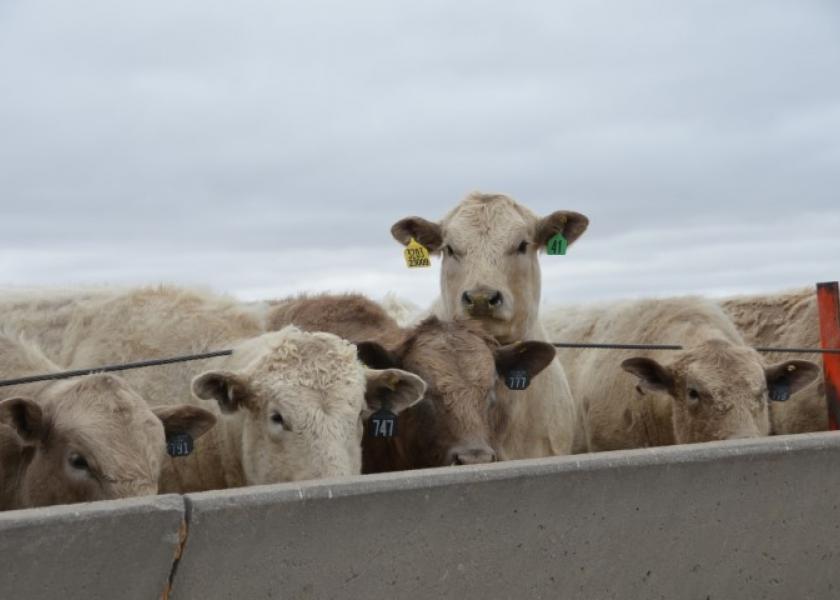Cattle Outlook: Feedlot Placements Down, Marketings Up

By: Ron Plain and Scott Brown, University of Missouri Extension
USDA's November cattle on feed report said October placements into large feed yards were down 5.0% and October marketing were up 4.6%, making the November 1 on-feed number 98.7% of a year ago. The pre-release trade forecast predicted October placements to be down 4.9%, marketings up 4.4%, and the November on-feed number 98.9% of last year.
The U.S. imported 107,559 live cattle during September. That was 7.5% greater than the month before, but 26.3% fewer than a year ago. Compared to September 2015, cattle imports from Canada were down 3.3% and imports from Mexico were down 45.6%.
Domestic retail meat demand was down 5.6% in September compared to a year earlier. Beef demand was down 7.6%, pork demand down 1.9%, and chicken demand was down 7.0%. Foreign demand or U.S. beef was up 17.3% compared to September 2015.
The average price of choice beef at retail during October was $5.737 per pound. That is 13.1 cents lower than the month before, 49.4 cents lower than October 2015, and the lowest for any month since March 2014. The average grocery store price during October for all fresh beef was $5.583 per pound.
Fed cattle prices were higher this week on very heavy sales volume. Through Thursday, the 5-area average price for slaughter steers sold on a live weight basis was $107.92/cwt, up $5.20 from last week's average, but down $14.59 from a year ago. The 5-area dressed steer price averaged $169.92/cwt, up $10.92 from the week before, but down $24.58 from a year ago.
Beef cutout value was lower this week. This morning, the choice boxed beef cutout value was $183.29/cwt, down $2.04 from the previous Friday. The select carcass cutout this morning was $167.46/cwt, down 33 cents from last week.
This week's cattle slaughter totaled 629,000 head, up 3.1% from last week and up 10.2% from a year ago. Next week's slaughter will be lower due to Thanksgiving. The average steer dressed weight for the week ending on November 5 was 913 pounds, down 4 pounds from the week before, down 8 pounds from a year ago, and below the year-ago level for the 27th consecutive week.
Cattle prices were higher this week at the Oklahoma City auction. Feeder steer prices were steady to $5 higher and stocker calves were $2 to $9 higher than last week. Prices for medium and large frame #1 steers by weight group were: 400-450# $140-173, 450-500# $144-$167, 500-550# $137-$157, 550-600# $130.25-$142.50, 600-650# $120-$135.50, 650-700# $119.50-$131.25, 700-750# $123-$131.75, 750-800# $120-$132, 800-900# $122.50-$134.25, and 900-1000# $115-$129.25/cwt.
Cattle futures were higher this week. The December live cattle futures contract settled at $108.32/cwt today, up $2.72 for the week. February fed cattle settled at $108.85/cwt, up $2.55 from the previous Friday. April fed cattle futures settled at $108.90/cwt. The January feeder cattle futures ended the week at $124.97/cwt, up $3.95 from a week earlier. March feeder cattle gained $3.32 this week to settle at $120.77/cwt.







